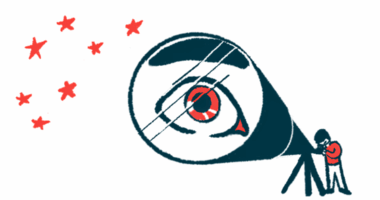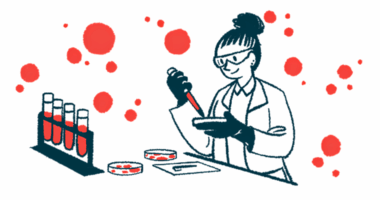FDA approves marstacimab, now Hympavzi, for hemophilia
Pfizer therapy indicated for hemophilia A or B patients without inhibitors

The U.S. Food and Drug Administration (FDA) has approved Pfizer’s marstacimab under the brand name Hympavzi for use as a routine prophylaxis to prevent or reduce the frequency of bleeding episodes in adults and children, ages 12 and older, with hemophilia A or B without inhibitors.
With the approval, Hympavzi has now become the first treatment for hemophilia A or B in the U.S. to be administered via a prefilled autoinjector pen. It is also the first once-weekly subcutaneous, or under-the-skin, injection therapy to become available for people with hemophilia B in the U.S.
According to Pfizer, the therapy requires minimal preparation to be administered.
“The approval of Hympavzi is a meaningful advancement for people living with hemophilia A or B without inhibitors for bleed prevention, with a generally manageable safety profile and a straightforward once-weekly subcutaneous administration,” Suchitra S. Acharya, MD, director of the Hemostasis and Thrombosis Center Northwell Health, and head of the bleeding disorders and thrombosis program at Cohen Children’s Medical Center, said in a company press release.
Aamir Malik, Pfizer’s executive vice president and U.S. chief commercial officer, noted that Hympavzi is the company’s second hemophilia treatment to be approved by the FDA this year. He called the therapy “the latest meaningful scientific advancement in our more than 40-year commitment to improve care for people living with hemophilia.”
Hympavzi approved for adults and children, ages 12 and older
Hemophilia is a rare disease caused by a missing or faulty clotting factor — a protein that helps the blood to clot and prevents the condition’s hallmark symptom, excessive bleeding. In hemophilia A, the missing or dysfunctional clotting factor is factor VIII, or FVIII, while in hemophilia B, it’s factor IX, known as FIX. Treatment for either type generally consists of regular infusions of factor replacement therapies, which supply patients with a version of the clotting factor they are missing to prevent bleeding episodes.
An antibody-based therapy, Hympavzi is designed to bind and block the activity of tissue factor pathway inhibitor (TFPI), an anticlotting protein that normally works to prevent the formation of blood clots. By interfering with the activity of TFPI, Hympavzi is expected to promote blood clotting through a mechanism that bypasses the need for FVIII or FIX.
According to Acharya, “Hympavzi aims to reduce the current treatment burden by meeting an important need for these patients, including many who have required frequent, time-consuming intravenous [into-the-vein] treatment infusion regimens.”
The availability of this therapy represents a powerful step forward in advancing care for more individuals and families in the bleeding disorders community. … This novel treatment option … addresses some of the ongoing challenges faced by people with hemophilia A and B.
Phil Gattone, president and CEO of the National Bleeding Disorders Foundation, said the new preventive therapy will be a game-changer for many hemophilia patients.
“The availability of this therapy represents a powerful step forward in advancing care for more individuals and families in the bleeding disorders community,” Gattone said. “We greatly appreciate Pfizer’s innovative efforts in developing this novel treatment option that addresses some of the ongoing challenges faced by people with hemophilia A and B.”
Therapy under review in Europe for regulatory approval
Hympavzi’s approval drew on positive data from BASIS (NCT03938792), an ongoing Phase 3 noninferiority clinical study. That trial is assessing the safety and efficacy of the therapy in boys and men, ages 12-74, with or without inhibitors, which are neutralizing antibodies that may limit how well conventional replacement therapies work.
The participants had either severe hemophilia A or moderately severe to severe hemophilia B. All received standard replacement therapies or bypassing agents to manage bleeds for six months before starting treatment with Hympavzi — administered as a 300 mg loading dose, followed by weekly 150 mg doses — for about a year.
In a subset of 116 individuals without inhibitors, Hympavzi led to a 35% reduction in the annualized bleeding rate for treated bleeds when compared with the patients’ previous preventive therapy. This reduction was even more pronounced among those given on-demand therapy, with the annualized bleeding rate for treated bleeds dropping by 92%.
Hympavzi’s safety profile was consistent with that displayed in previous studies, with the therapy found to be safe and generally well tolerated. The most commonly reported side effects included injection site reactions, headache, and itching, known medically as pruritus.
Data from an additional group of patients with inhibitors who are participating in BASIS are expected next year. Pfizer also is sponsoring another Phase 3 trial called BASIS KIDS (NCT05611801) to evaluate the safety and efficacy of the therapy in children, ages 1-17, with severe hemophilia A or moderately severe to severe hemophilia B with or without inhibitors.
“We look forward to launching this latest medical breakthrough and to now offer three distinct classes of hemophilia medicines — an anti-TFPI, gene therapy, and recombinant factor treatments — that can meet the unique treatment needs of a wide range of patients,” Malik said.
Hympavzi is still under review by the European Medicines Agency for potential approval in the European Union. The agency’s Committee for Medicinal Products for Human Use last month issued a positive opinion recommending its approval as a routine prophylactic therapy for adults and adolescents, ages 12 and older, with severe hemophilia A or B. A decision is expected in early 2025.







